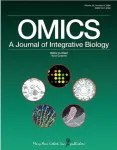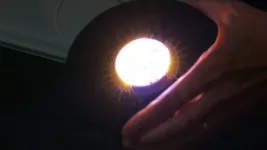(Press-News.org) MINNEAPOLIS/ST. PAUL (09/16/2024) — The U.S. Department of Health and Human Services Healthy People 2030 plan sets a national objective to increase youth sports participation from 50% to 63% over the next five years. For adolescents, staying active offers benefits to their overall health and their social and academic lives. However, the number of youths participating in physical activity and sports is on the decline. While participation gaps based on single social identities are well-studied, little research has examined adolescents’ multiple, intersecting marginalized social identities.
Research published in the Journal of Adolescent Health examined the inequities that exist at the intersection of multiple identities — including assigned sex, gender modality, sexual identity, racial and ethnic identity, access to economic resources, weight status, and mental health, behavioral and emotional problems — and their impact on sports and physical activity participation.
The study, led by Sarah Kaja, PhD, of the Equitable Sport and Physical Activity Innovations Lab and an assistant professor in the University of Minnesota Medical School, analyzed intersections of seven social identities among specific subgroups of adolescents in grades 9 and 11. The research used 2022 Minnesota Student Survey data — in which over 60,000 students self-reported their social identities as well as team sport and physical activity participation. They found:
While 50% of the students played sports and 25% participated in physical activity lessons, participation varied substantially at the intersections of social identities. For example, participation prevalences were as low as 8-17% among groups of students least involved in sports.
Students with the highest sports participation were predominantly white, heterosexual and had high access to resources, while participants with the lowest sports participation held multiple marginalized social identities.
Physical activity lessons had more participation among youth of color and gender and sexual minority youth, but participation was still most often in combination with high access to resources.
Students in all the lowest sports participation groups held at least one marginalized social identity, and the majority held more.
The lowest sports participation groups included students with a marginalized sexual identity and at least one other marginalized social identity, such as low access to resources, a transgender or gender-questioning identity, or a higher BMI percentile.
Previous research has shown context-specific stressors — such as insufficient policies, victimization and harassment — can limit LGBTQ+ people's motivation and participation. This new research suggests those stressors may compound further for those with multiple marginalized identities, and that initiatives meant to reach adolescents based on a single identity may fail to reach the adolescents who need the most support to participate.
“By revealing more nuance in young peoples’ level of engagement in organized sport and activity, our work is an important step to address which students need support to play,” said Dr. Kaja. “With these building blocks, we hope to continue working to reduce health disparities, achieve national public health priorities and encourage school and community-based organizations to cultivate inclusive environments and layer recruitment, retention and policy initiatives to support under-involved youths.”
Future research should prioritize adolescents with social identities over-represented in the lowest prevalence sport and physical activity involvement groups to further identify and address specific social and structural barriers to participation.
Dr. Kaja was supported by the National Institutes of Health's National Center for Advancing Translational Sciences. Other authors were supported by the National Institute on Minority Health and Health Disparities.
-30-
About the University of Minnesota Medical School
The University of Minnesota Medical School is at the forefront of learning and discovery, transforming medical care and educating the next generation of physicians. Our graduates and faculty produce high-impact biomedical research and advance the practice of medicine. We acknowledge that the U of M Medical School is located on traditional, ancestral and contemporary lands of the Dakota and the Ojibwe, and scores of other Indigenous people, and we affirm our commitment to tribal communities and their sovereignty as we seek to improve and strengthen our relations with tribal nations. Learn more at med.umn.edu.
END
Students with multiple marginalized identities face barriers to sports participation
2024-09-16
ELSE PRESS RELEASES FROM THIS DATE:
Purdue deep-learning innovation secures semiconductors against counterfeit chips
2024-09-16
WEST LAFAYETTE, Ind. — Researchers in Purdue University’s College of Engineering have developed a patent-pending optical counterfeit detection method for chips used in semiconductor devices.
The Purdue method is called RAPTOR, or residual attention-based processing of tampered optical responses. It leverages deep learning to identify tampering. It improves upon traditional methods, which face challenges in scalability and discriminating between natural degradation and adversarial tampering.
Alexander Kildishev, professor in the Elmore ...
Will digital health meet precision medicine? A new systematic review says it is about time
2024-09-16
A new systematic review of pharmacogenomics clinical decision support systems used in clinical practice in the peer-reviewed OMICS: A Journal of Integrative Biology suggests that these e-health tools can help accelerate pharmacogenomics, precision/personalized medicine, and digital health emergence in everyday clinical practice worldwide. Click here to read the article now.
Anastasia Farmaki, MSc, from the Centre for Research and Technology Hellas, Thessaloniki, and coauthors in Greece, conducted a systematic review that examined and mapped the pharmacogenomics-clinical decision support ...
Improving eye tracking to assess brain disorders
2024-09-16
A University of Houston engineering team has developed wearable sensors to examine eye movement to assess brain disorders or damage to the brain. Many brain diseases and problems show up as eye symptoms, often before other symptoms appear.
You see, eyes are not merely a window into the soul, as poets would have it. These incredibly precious organs are also an extension of the brain and can provide early warning signs of brain-related disorders and information on what causes them. Examining the eyes can also help track the progression and symptoms of physical and mental shocks to the brain.
Researchers say ...
Hebrew University’s professor Haitham Amal is among a large $17 million grant consortium for pioneering autism research
2024-09-16
Hebrew University of Jerusalem is proud to announce that Professor Haitham Amal is among a large $17M grant consortium for pioneering autism research. This grant is part of an American funding initiative awarded by the California Institute for Regenerative Medicine (CIRM), aimed at advancing cutting-edge autism studies.
A world-renowned expert in nitric oxide and brain disorders, Professor Amal has made groundbreaking discoveries in autism research. His team was the first to identify a direct link between nitric oxide levels in the brain and autism spectrum disorder (ASD), a finding with profound implications for the ...
Scientists mix sky’s splendid hues to reset circadian clocks
2024-09-16
Those mesmerizing blue and orange hues in the sky at the start and end of a sunny day might have an essential role in setting humans’ internal clocks.
In new research from the University of Washington in Seattle, a novel LED light that emits alternating wavelengths of orange and blue outpaced two other light devices in advancing melatonin levels in a small group of study participants.
Published in the Journal of Biological Rhythms, the finding appears to establish a new benchmark in humans’ ability to influence their circadian rhythms, and reflects an effective new approach to counteract seasonal affective disorder (SAD).
A ...
Society for Neuroscience 2024 Outstanding Career and Research Achievements
2024-09-16
Embargoed until Monday, September 16, noon EDT Contact: development@sfn.org
CHICAGO – The Society of Neuroscience (SfN) will honor leading researchers whose groundbreaking work has transformed neuroscience — including the understanding of pain, addiction, stress, synaptic transport, vision, and sleep — with this year’s Outstanding Career and Research Achievement Awards. The awards will be presented during SfN’s annual ...
Society for Neuroscience 2024 Early Career Scientists’ Achievements and Research Awards
2024-09-16
Embargoed until Monday, September 16, noon EDT Contact: development@sfn.org
CHICAGO – The Society for Neuroscience (SfN) will honor nine early career researchers whose work will be presented during Neuroscience 2024, SfN's annual meeting.
“Early career researchers are often the ones who bring fresh ideas and perspectives to the field,” said SfN President Marina Picciotto. “These awardees and their novel approaches to microscopy, machine learning, circuits and behavior ...
Society for Neuroscience 2024 Education and Outreach Awards
2024-09-16
Embargoed until Monday, September 16, noon EDT Contact: development@sfn.org
CHICAGO – The Society for Neuroscience (SfN) will present six neuroscientists with this year’s Science Education and Outreach Awards, comprising the Award for Education in Neuroscience, the Science Educator Award, and the Next Generation Awards. The awards will be presented during SfN’s annual meeting.
“The Society is honored to recognize these passionate neuroscientists ...
Society for Neuroscience 2024 Promotion of Women in Neuroscience Awards
2024-09-16
Embargoed until Monday, September 16, noon EDT Contact: development@sfn.org
CHICAGO — The Society for Neuroscience (SfN) will honor seven researchers who have made significant contributions to the advancement of women in neuroscience. The awards will be presented during Neuroscience 2024, SfN's annual meeting.
“Neuroscience is both a field of research and a community of researchers,” said SfN President Marina Picciotto. “These awardees not only advance our field’s understanding of the brain through their own research, they strengthen and support ...
Baek conducting air quality monitoring & simulation analysis
2024-09-16
Baek Conducting Air Quality Monitoring & Simulation Analysis
B.H. Baek, Research Associate Professor, Center for Spatial Information Science and Systems, College of Science, received funding for: “EPA Air Quality Modeling and Simulation Analysis (AQM- Office of Air Quality, Planning Standards (OAQPS) Program.”
Baek will perform work in support of the U.S. EPA Office of Air Quality Policy and Standards (OAQPS) Air Quality Modeling and Simulation Analysis.
Baek received $27,316 from General ...

